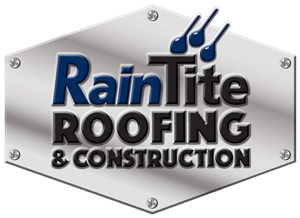In the heart of Rapid City, our homes are constantly on the frontline against nature’s elements. High up on the list of weather hazards we face are hail storms, which have a knack for leaving roofs battered, bruised and oftentimes in need of serious repair or replacement. If you’ve ever experienced the aftermath of a hail storm, you know that damage can range from a slight granule loss on shingles to more severe structural problems, requiring roof replacement. It’s during such times that homeowners wish they had a more resilient armor on their homes: a hail-resistant roof.
These hail-resistant roofing systems are designed with both durability and fortitude in mind, capable of shielding homes from the powerful and often devastating impacts of hail storms. By exploring these roofing options, you will be equipped to make more informed decisions when considering what type of roofing system best suits your home, your budget, and even your design preferences. But it’s not just about reactive measures. Having a hail-resistant roof could very well mean the difference between costly repairs post-hailstorm or merely a minor cleanup.
This guide aims to explore the world of hail-resistant roofing, providing insights on different materials available, the pros and cons of each, and crucial factors to consider when selecting the best roof for your home. With this knowledge, you’re one step closer to equipping your home with the best possible defense against Rapid City’s sometimes unpredictable weather patterns. The roof is the first line of defense against hail storms – let’s make it stand its ground with power and resilience.
Understanding Hail Damages
Hail damages can come in various forms and impact the integrity of your roofing system. Some of the most common types of hail damage include:
1. Granule loss: Shingles lose their granules, exposing the asphalt layer to UV rays, which can eventually weaken the shingles.
2. Cracks and punctures: Hailstones can cause cracks or punctures in the shingles or metal roofing, leading to leaks.
3. Broken or missing shingles: Hailstorms accompanied by strong winds can break or dislodge shingles, leaving sections of your roof exposed.
4. Dents or dings: Metal roofs can suffer aesthetic damage due to large hailstones, resulting in visible dents or dings.
To get the most out of hail-resistant roofing materials, it’s essential to inspect your roof regularly, especially after significant hail events, and address any minor damages before they escalate.
Inspecting Your Roof for Hail Damage
Regular inspection of your roof, particularly after a hailstorm, allows you to identify and address any damages early. Follow these steps to conduct a thorough inspection:
1. Safety first: Roof inspections can be dangerous, so always prioritize your safety. Use a sturdy ladder and wear slip-resistant shoes when climbing.
2. Look for visible damages: Check for dents, cracks, or missing shingles. Metal roofs might show dents more easily, while asphalt shingles could have exposed asphalt layers due to granule loss.
3. Inspect gutters and downspouts: Damage from hailstones can also affect your gutters and downspouts. Inspect for dents, loose sections, or other signs of damage.
4. Check the attic: Finally, inspect your attic for signs of water leaks, which could indicate roof damage such as cracks or punctures.
If you notice any damages or are unsure about the extent of the issues, contact a professional roofing contractor for a more thorough inspection and any necessary repairs.
Roof Repair vs. Replacement: Making the Right Decision
Deciding whether to repair or replace your roof hinges on factors like the extent of damage, roof age, and overall cost. Consider the following guidelines when making the decision:
1. Extent of damage: Minor damages like granule loss or small cracks can usually be repaired without the need for a complete replacement. However, extensive damage or multiple leaks may call for a new roof.
2. Age of the roof: If your roof is nearing the end of its life expectancy (e.g., 20-25 years for asphalt shingles), replacing it with a hail-resistant solution may be the more cost-effective option in the long run.
3. Cost comparison: Consult with a professional contractor to estimate repair and replacement costs. In some cases, recurring repair expenses may rival the cost of a full roof replacement.
Preventive Measures for Hail Storms
While it is impossible to stop hailstorms from occurring, several preventive measures can help minimize the damage to your roof:
1. Install hail-resistant roofing: Choose a hail-resistant roofing material like metal or Class 4 impact-resistant asphalt shingles to provide better protection for your home.
2. Trim trees and remove debris: Overhanging tree branches and accumulated debris can cause additional damages during hailstorms. Regularly trim your trees and clean your gutters and roof surface.
3. Ventilation and insulation: Proper roof ventilation and insulation can prevent ice dams in winter and reduce the chances of severe hail damages.
4. Schedule regular roof inspections: Regularly inspect your roof, ideally twice a year and after hailstorms, to catch damages early and fix any issues before they escalate.
Conclusion:
As Rapid City homeowners, we understand the importance of protecting our homes from the devastating effects of hailstorms. Investing in hail-resistant roofing options goes a long way in safeguarding your property from such weather events. By thoroughly examining roofing materials and their ability to withstand hail, as well as considering factors like budget, climate, and aesthetics, you can make an informed decision that best suits your needs.
At RainTite Roofing & Construction, we are committed to providing our clients with expert advice and reliable residential roofing services. As a trusted local roofing company, we specialize in a range of hail-resistant and durable solutions tailored to the unique challenges of our regional climate. Contact us today to discuss your roofing needs and let us assist you in choosing the best roof to shield your home from hail and other weather conditions. Together, we can ensure that your home remains secure, energy-efficient, and beautiful for years to come.

